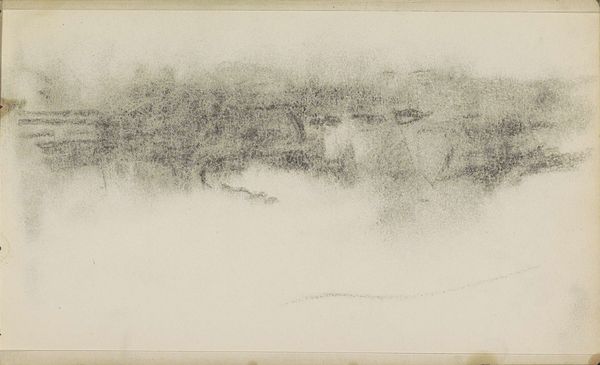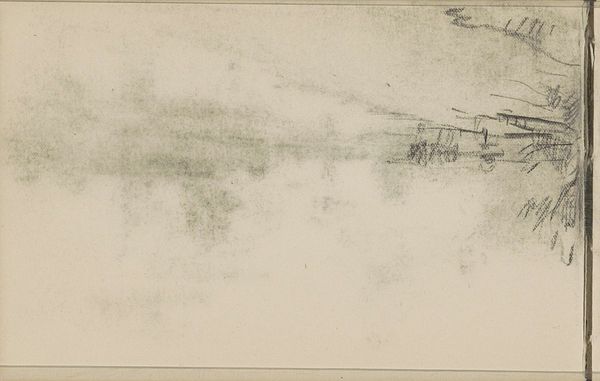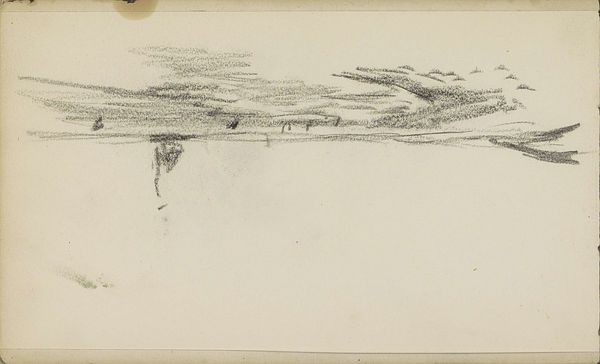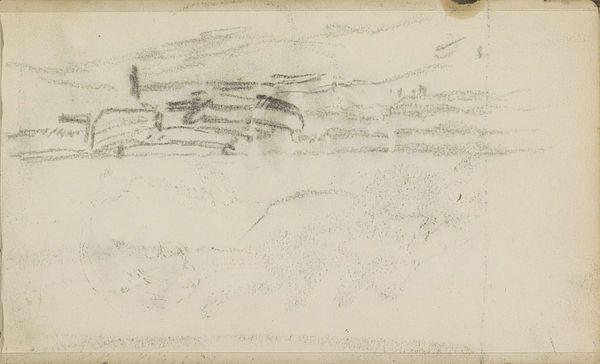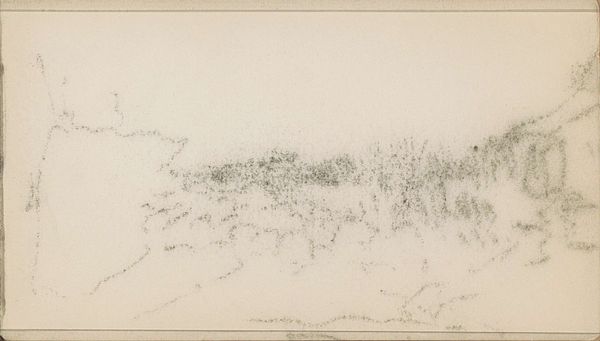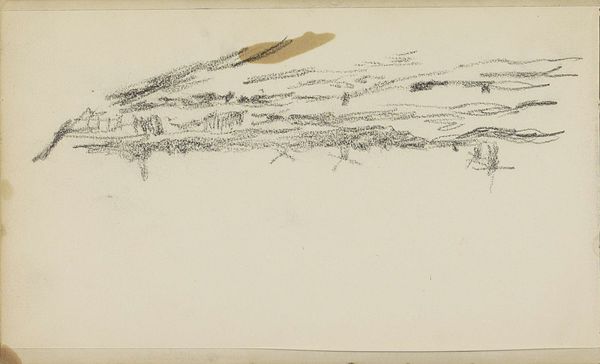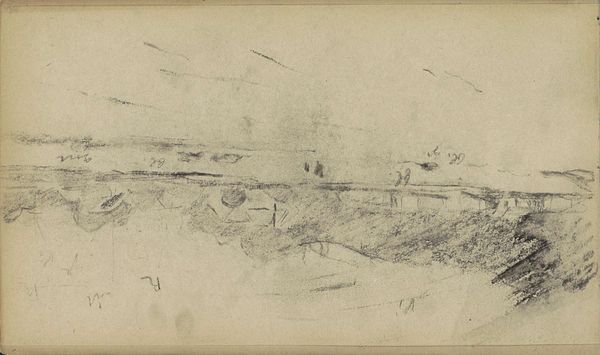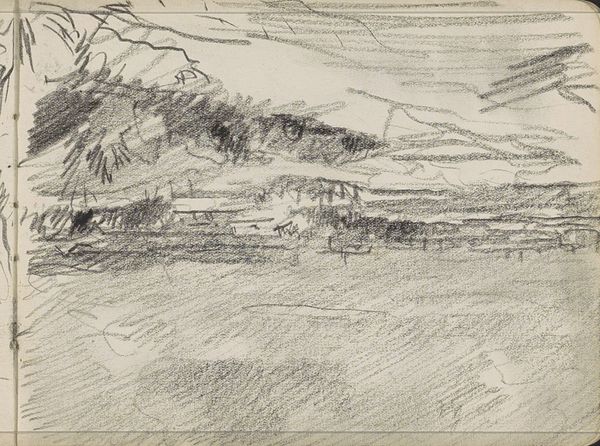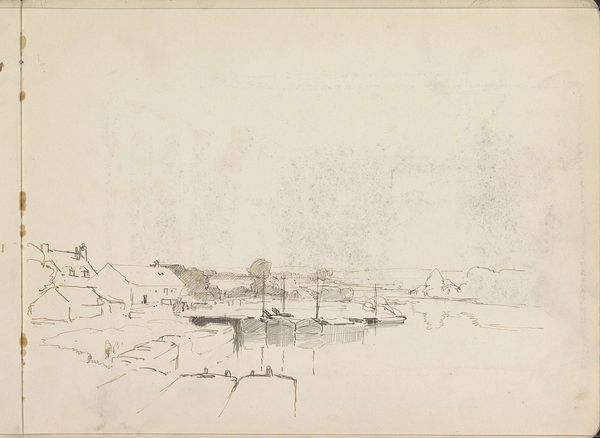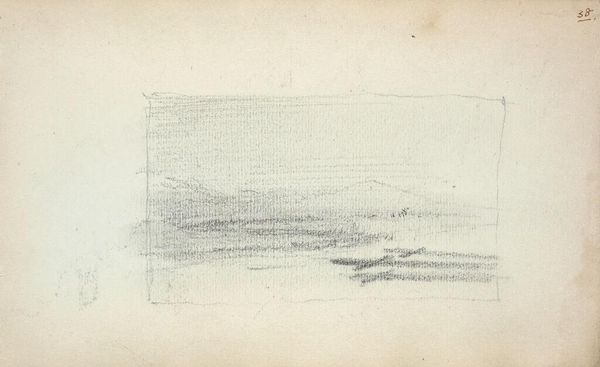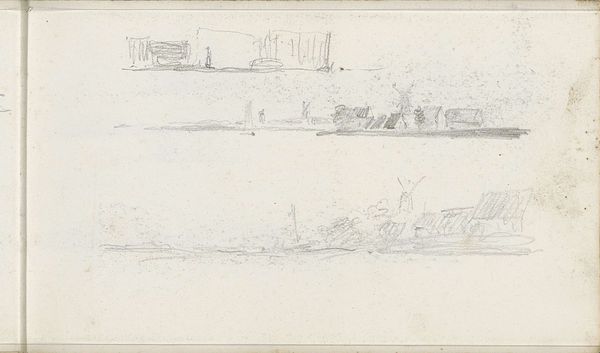
drawing, paper, pencil, charcoal
#
pencil drawn
#
drawing
#
impressionism
#
landscape
#
charcoal drawing
#
paper
#
pencil drawing
#
pencil
#
pencil work
#
charcoal
Copyright: Rijks Museum: Open Domain
Curator: Jozef Israëls, known for capturing the somber realities of working-class life, here presents us with "Landschap met water," dating somewhere between 1834 and 1911. A subtle landscape rendered in pencil and charcoal, currently residing here at the Rijksmuseum. Editor: My initial reaction? Melancholy. The monochromatic palette, the blurred lines... it all evokes a sense of stillness, almost a quiet resignation. The composition, primarily horizontal, seems to emphasize the breadth of the scene while simultaneously diminishing its depth. Curator: Absolutely. Israëls came from a family steeped in artistic and cultural traditions; his father was a successful banker who also collected art. Israëls, having witnessed the hardships of fisherman's family early in his career, tried to depict in his paintings the harsh existence of marginalized communities. Editor: You can feel it in the textures. Notice how Israëls uses varying pressure with his pencil to create a shimmering effect on the water's surface, in stark contrast with the more solid, defined form of the shoreline. The line is blurred between the natural and the ethereal in a subtle, elegant manner. Curator: Israëls work was definitely appreciated by a new socially conscious, art-buying middle class eager to own pieces mirroring a newfound moral imperative in painting at the time, following years of royalist and aristocratic dominance. He was greatly influenced by the Hague School movement and this drawing reflects that preoccupation with the Dutch landscape and its atmosphere. Editor: And atmosphere is precisely the right word. While not overtly symbolic, the subdued tones and implied vastness evoke feelings larger than simply observing a landscape. Perhaps isolation? The subtle gradation, from a near-white lower register to almost a dark umber horizon, masterfully pulls us in. Curator: The artwork's historical value cannot be understated; it provides a window into the artistic trends and socio-political climate of the late 19th century Netherlands. Israëls aimed to connect with his audience on an emotional level and address the problems in a fair way, and that makes this drawing relevant today. Editor: Indeed. Stripping away color enhances the fundamental relationship between line, texture, and form, distilling the landscape to its essence. It causes us to consider a fresh view on how one builds a scene. Ultimately, this understated drawing possesses a power far exceeding its size.
Comments
No comments
Be the first to comment and join the conversation on the ultimate creative platform.
